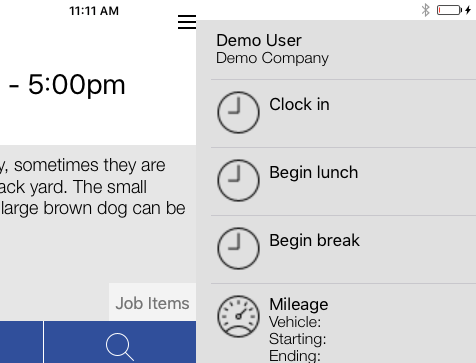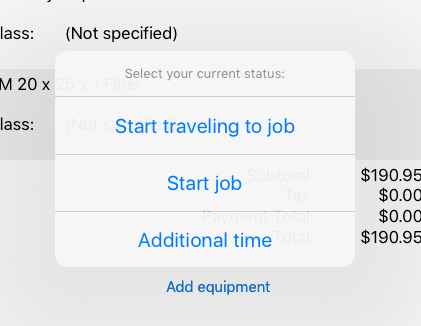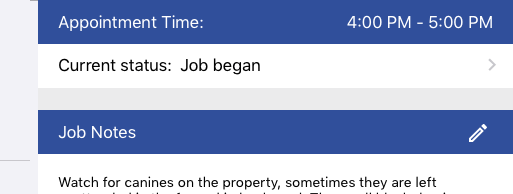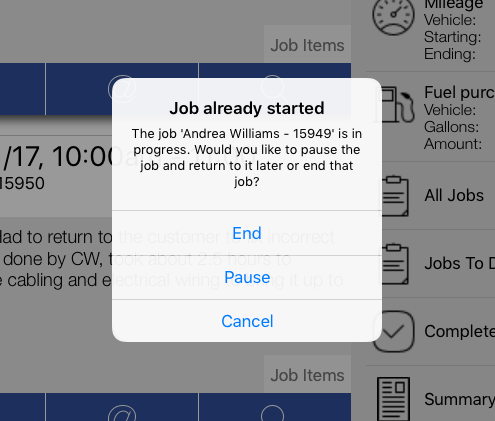Field Service Time Tracking Options
By Ben Yackshaw on Thursday, June 18, 2020Tracking time for field technicians can be a tricky task for most field service companies—until software comes into play.
Most field service businesses have an intense interest in time tracking for their employees. Time tracking serves many purposes, chief among them logging hours for billing and payroll.
Of course, the very nature of field service work makes time tracking a tricky proposition. When an employee reports to a single location (like a restaurant), works there all day, and leaves in the afternoon/evening, logging hours is a pretty straightforward task. However, HVAC techs, plumbers, electricians, and other field service pros spend their day in the field, often performing services for several different clients. How do you log and bill hours for these employees? In this article, we take a look at a few options.
Time Clocks
The default means of clocking in/out for most businesses, a punch card system will log timestamps when an employee physically clocks in/out for the day. Most modern time clock systems will provide an online portal for managers to review time punches. Some systems even integrate with accounting software like QuickBooks. This works great for dispatchers, bookkeepers, and other office employees who report to a single location every day to do their jobs.
Of course, such a system makes less sense for field technicians, as it forces them to report to the office at the beginning and end of each day. Depending on your field service specialization, it might not make any sense to force these traditional commutes on employees. An HVAC tech with a fully-stocked service truck could, in theory, travel directly to their first job site to begin their day.
Furthermore, a traditional time clock system provides no way to log production time for an individual customer (important if your field service business charges an hourly rate for labor). For companies with these kinds of complex time tracking needs, a field service software system with time tracking capabilities represents a great investment.
Smart Service: The Time Tracking App That Syncs With QuickBooks
The optimum way for most modern field service businesses to handle time tracking? Field service management software. This software allows technicians to clock in at home, travel directly to their first job (recording travel time), then register the exact amount of time they put in working for each customer.
In the rest of this article, we’ll take a look at how time tracking works in the leading field service software Smart Service.
A Day in the Life
After a tech wakes up in the morning, they can open up the Smart Service mobile app on their tablet or smartphone, download their schedule for the day, then digitally clock in.

This creates a timestamp that syncs back to your office dispatch team, allowing them to keep track of the technician’s progress (this timestamp will also update the employee’s record in QuickBooks).
When they’re ready to head out, your employee can mark themselves as traveling to a job:

This helps your company log travel time, and will also send your customer a text message to inform them that your tech is inbound.
After arriving at the customer’s location, your technician can mark that they’ve begun to work.

This will help them log the exact amount of time they spend in production for a single client. At the end of the job, the tech will mark the job as finished. They can then bill the customer (and collect payment) with an invoice that includes the exact, accurate amount of billable labor time. If you’d rather they simply move on to their next job and leave the invoicing to your office team, you can choose to do that instead (office staff can still reference the exact amount of labor time your tech put in).
Technicians can repeat this process for every job on tap for every workday. At the end of the day, they can use the Smart Service mobile app to clock out. Again, this could prevent an unnecessary trip back to the office.
Time Tracking for Payroll
One of the cool things about time tracking in Smart Service? The process described above will also record the total hours your techs put in during the course of the day. This makes it easy to tabulate time totals for hourly employees. Because Smart Service works as a direct QuickBooks add-on, all moves made in the software are duplicated in QuickBooks in real time.
Lunch Breaks
What happens when a tech goes to lunch? Or needs to temporarily stop working on a job for another reason? Smart Service can accommodate both of these common scenarios. Techs can “pause” current jobs (if they have to leave for parts or come back another day), temporarily halting the tabulation of labor time. When they’re ready to resume, techs can simply unpause that same job.
When lunchtime rolls around, techs can tap a button to begin their lunch break. This will start a time period that will ultimately be deducted from their total work time for the day.
Employee Tracking
Smart Service time tracking empowers employees to manage the time clock no matter where the day takes them. Of course, this could raise concerns for companies that don’t want to give their employees that much freedom.
Fortunately, Smart Service allows office staff to review the locations and progress of employees in real time.

This will give you enough oversight to know when a tech is working hard and when they’re taking liberties with company time.
Get a Free Demo
Ready to learn more about Smart Service and how it can change your business? Click here to request a free, online Smart Service demo. In it, a software expert will take you on a tour of the system and show you all the ways it can boost your business.

